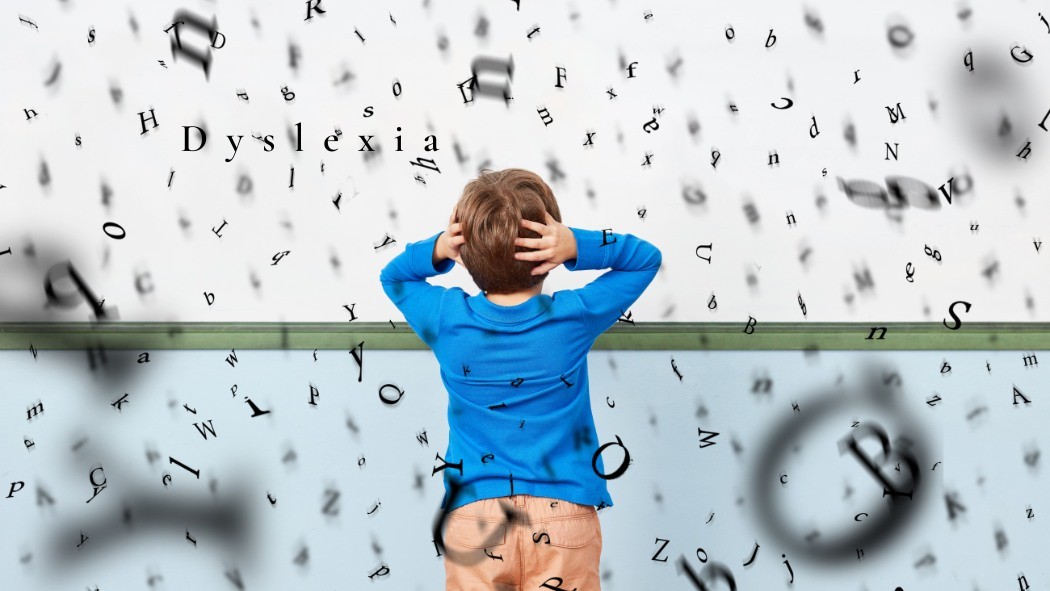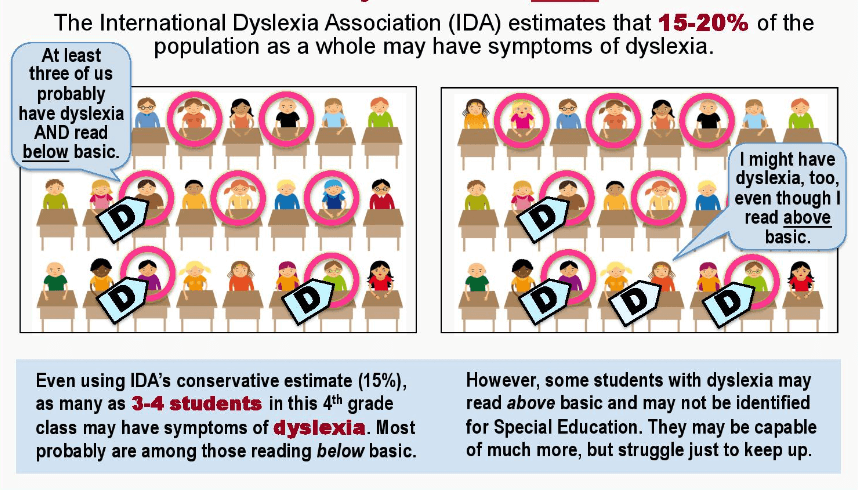It’s time to screen all students for dyslexia risks

Let’s not wait for more kids to fail
It’s hard to believe, but federal prisons are ahead of California public schools when it comes to screening for reading challenges.
Under a 2018 law, federal prisoners are screened for risks of dyslexia, for good reason. In some prisons today nearly 80% of the inmates are illiterate, and almost half of the inmates are on the dyslexia spectrum. Dyslexia is a leading cause of illiteracy.
Is California connecting the dots and requiring public schools to screen for risk of dyslexia? Not yet. According to the National Center on Improving Literacy, California is way behind other states in taking action to require screening for risk of dyslexia.
Important update: At last, California passed legislation to do something about this issue. Universal screening for risk of dyslexia will begin in K-2 grades starting in the 2025-26 school year, using a new screening methodology.
Screening for the risk of dyslexia helps teachers identify the reading needs of each student, which helps them support each student in specific areas of need.
Advocates, including the California State PTA, have called for California to join other states in screening all students, but so far without success. In 2022 a bill to put the policy in place died because of opposition from the California Teachers Association and the California School Boards Association. The primary concern has been that existing screening tools might over-identify students as being at risk of dyslexia if they are not yet fluent in English.
Risks of dyslexia
Dyslexia makes learning much harder. It’s a condition of varying intensity, affecting 80-90% of all students with learning disabilities. EdSource has done a great job of revealing the personal impact of dyslexia in its podcast:
According to the Mayo Clinic, “Left untreated, dyslexia may lead to low self-esteem, behavior problems, anxiety, aggression, and withdrawal from friends, parents and teachers.” Students with dyslexia are less likely to graduate from high school and attend college. The school-to-prison pipeline is well-populated with dyslexic kids who don’t get the support they need to learn to read.
In California, hundreds of thousands of children struggle every day to read at grade level, often without proper support. In third grade, for example, the CAASPP results show that nearly 60% of students are not yet proficient in reading. This is a huge problem — students can't "read to learn" until they have successfully learned to read.
Most school districts in California do not screen all students for risk of dyslexia, leaving teachers and staff without key resources necessary to help students.
Illiteracy in society is hugely expensive. In a 2022 report, UNESCO estimated that illiteracy suppresses the economy of the United States by 2% each year. This is a huge sum — for context, California’s total investment in K-12 public education amounts to about 3% of the state’s economy.

Early screening for risk of dyslexia can help identify why so many students are struggling to read. Reading proficiently requires mastery of many different skills.
- Sound-symbol recognition and symbol-sound recognition including phoneme blending, phoneme segmenting, and phoneme manipulation tasks.
- Alphabet knowledge
- Decoding skills including real and nonsense words.
- Rapid naming with letters, digits, objects, or colors.
Once teachers know the skills a child needs to master they can target instruction to meet those needs.
A core metric for success in school is for students to read proficiently by third grade. Students should learn to read by third grade because by that point they need to read to learn.
Common Misconceptions
Dyslexia is frequently misunderstood. It is not connected to overall intelligence. It doesn’t vary based on whether parents read to children at home. It is unaffected by laziness or whether a child has a vision problem.
Dyslexia is neurological and caused by wiring of the brain. There is no cure. According to the International Dyslexia Association, “it is characterized by difficulties with accurate and/or fluent word recognition and by poor spelling and decoding abilities." People with dyslexia succeed by learning coping strategies.
|
Some very successful people with dyslexia |
|
|---|---|
|
Scientists and academics |
Albert Einstein Alexander Graham Bell |
|
Leaders |
Gavin Newsom Steve Jobs Richard Branson |
|
Celebrities |
Tom Cruise Keira Knightley Nolan Ryan Anderson Cooper |
|
Artists and creators |
Steven Spielberg Walt Disney Agatha Christie |
Obviously, there are many other examples. Learning about successful people who struggled with dyslexia can be very motivating to students who struggle with it.
Third time a charm?
California Senator Anthony Portantino has introduced a new bill, SB 691, to add California to the list of states that provide all students with risk screening for dyslexia. The bill resembles his previous effort, which was killed in committee, with some adjustments.
To address concerns about appropriate screening for English language learners, the bill now says that a student’s English language acquisition status, home language, and language of instruction shall be considered. It also makes clear that a risk screening is not an evaluation to determine eligibility for special education or 504 services.
|
SB 691 requires: |
|
|---|---|
|
Universal screening |
Required annual screening for K to grade 2 students for risk of dyslexia, unless parents or guardians choose not to have their child screened. |
|
State-approved screening instruments |
The State Board of Education must establish an approved list of evidence-based culturally, linguistically, and developmentally-appropriate screening instruments for risk of dyslexia. |
|
Support for students |
For students identified as being at risk of dyslexia, school districts, county offices of education, and charter schools are required to provide evidence-based literacy instruction, progress monitoring, and early intervention in the regular general education classroom. |
There are already many screening tools. The UCSF Dyslexia Center is developing a new digital screening tool, called Multitudes, that measures how well a student can recognize letters and sounds. This 20-minute digital test will be free for all California public schools to aid in the early identification of Kindergarten and first grade students who may face challenges learning to read. It will be available in several languages.
Does your elementary school screen for risk of dyslexia?
One way to help students at your school is to ask your principal whether all K-2 students are screened for risk of dyslexia.
If the answer is no, share this post with your principal! Let your school board and superintendent know you want to help more students learn to read.
You can also contact your representatives in the State Senate and Assembly to let them know this is important to you. Find your representatives here.
What do you think?
Should California require universal screening for risk of dyslexia? Add your voice to the comments below.
Tags on this post
Special ed DyslexiaAll Tags
A-G requirements Absences Accountability Accreditation Achievement gap Administrators After school Algebra API Arts Assessment At-risk students Attendance Beacon links Bilingual education Bonds Brain Brown Act Budgets Bullying Burbank Business Career Carol Dweck Categorical funds Catholic schools Certification CHAMP Change Character Education Chart Charter schools Civics Class size CMOs Collective bargaining College Common core Community schools Contest Continuous Improvement Cost of education Counselors Creativity Crossword CSBA CTA Dashboard Data Dialogue District boundaries Districts Diversity Drawing DREAM Act Dyslexia EACH Early childhood Economic growth EdPrezi EdSource EdTech Education foundations Effort Election English learners Equity ESSA Ethnic studies Ethnic studies Evaluation rubric Expanded Learning Facilities Fake News Federal Federal policy Funding Gifted Graduation rates Grit Health Help Wanted History Home schools Homeless students Homework Hours of opportunity Humanities Independence Day Indignation Infrastructure Initiatives International Jargon Khan Academy Kindergarten LCAP LCFF Leaderboard Leadership Learning Litigation Lobbyists Local control Local funding Local governance Lottery Magnet schools Map Math Media Mental Health Mindfulness Mindset Myth Myths NAEP National comparisons NCLB Nutrition Pandemic Parcel taxes Parent Engagement Parent Leader Guide Parents peanut butter Pedagogy Pensions personalized Philanthropy PISA Planning Policy Politics population Poverty Preschool Prezi Private schools Prize Project-based learning Prop 13 Prop 98 Property taxes PTA Purpose of education puzzle Quality Race Rating Schools Reading Recruiting teachers Reform Religious education Religious schools Research Retaining teachers Rigor School board School choice School Climate School Closures Science Serrano vs Priest Sex Ed Site Map Sleep Social-emotional learning Song Special ed Spending SPSA Standards Strike STRS Student motivation Student voice Success Suicide Summer Superintendent Suspensions Talent Teacher pay Teacher shortage Teachers Technology Technology in education Template Test scores Tests Time in school Time on task Trump Undocumented Unions Universal education Vaccination Values Vaping Video Volunteering Volunteers Vote Vouchers Winners Year in ReviewSharing is caring!
Password Reset
Search all lesson and blog content here.
Login with Email
We will send your Login Link to your email
address. Click on the link and you will be
logged into Ed100. No more passwords to
remember!














Questions & Comments
To comment or reply, please sign in .
Carol Kocivar December 17, 2024 at 4:21 pm
https://www.cde.ca.gov/be/cc/rd/
enangriffin March 7, 2023 at 11:36 am
monie deWit February 27, 2023 at 10:27 am
Stephanie Simpson February 26, 2023 at 7:26 pm
After reading this piece and the details of SB 691, it’s impossible not to think “How is screening young students for risk of the most common learning disability not something California schools already do?”
Let’s go, California - support SB 691!
Carol Kocivar February 26, 2023 at 5:27 pm
LBD February 26, 2023 at 5:10 pm